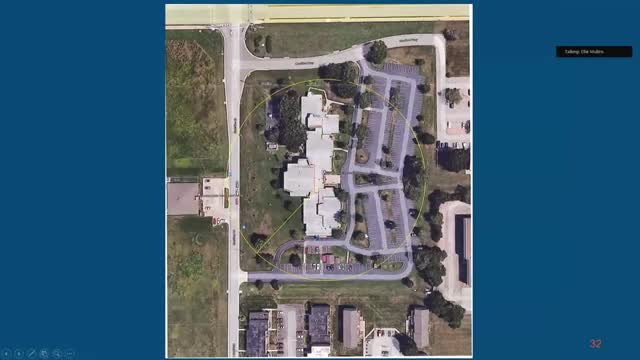Historic Church Faces Controversy Over Preservation Standards
July 19, 2024 | Lawrence, Douglas County, Kansas

This article was created by AI summarizing key points discussed. AI makes mistakes, so for full details and context, please refer to the video of the full meeting. Please report any errors so we can fix them. Report an error »

In a recent government meeting, discussions centered around the historic designation of the First Presbyterian Church (FPC) and the implications of its surrounding context area. The meeting highlighted ongoing research by staff regarding the term \"radius\" in relation to the church's historic context, proposing a 250-foot area surrounding the property to assess the impact of nearby structures on the church's architectural significance.
Staff evaluations indicated that three storage sheds located on the church property do not detract from the church's historic integrity. These sheds, primarily used for storage, are positioned at the rear of the property and are not visible from the main public right of way. The staff concluded that the sheds, which vary in size and do not require building permits, do not impact the overall historic and architectural significance of the church.
The context area, defined in Chapter 22 of local regulations, has historically been established using parcel boundaries. Staff emphasized that any changes to this definition, such as reducing the context area from 250 feet to 150 feet or measuring from the building rather than the property line, would contradict existing ordinances. The discussion also touched on the challenges of evaluating properties in mixed-use areas where cohesive patterns are absent.
Public comments included support for the church's nomination to the Lawrence Register of Historic Places, with representatives arguing that the church's architectural uniqueness should not be overshadowed by the presence of the sheds. Opponents raised concerns about the potential for regulatory inconsistencies, questioning whether the church's historic designation could affect neighboring properties' ability to maintain similar structures.
As the meeting progressed, it became clear that the commission faces a complex decision regarding the balance between preserving historic integrity and accommodating the needs of the surrounding community. The outcome of this discussion will likely influence future applications for historic recognition and the management of context areas in Lawrence.
Staff evaluations indicated that three storage sheds located on the church property do not detract from the church's historic integrity. These sheds, primarily used for storage, are positioned at the rear of the property and are not visible from the main public right of way. The staff concluded that the sheds, which vary in size and do not require building permits, do not impact the overall historic and architectural significance of the church.
The context area, defined in Chapter 22 of local regulations, has historically been established using parcel boundaries. Staff emphasized that any changes to this definition, such as reducing the context area from 250 feet to 150 feet or measuring from the building rather than the property line, would contradict existing ordinances. The discussion also touched on the challenges of evaluating properties in mixed-use areas where cohesive patterns are absent.
Public comments included support for the church's nomination to the Lawrence Register of Historic Places, with representatives arguing that the church's architectural uniqueness should not be overshadowed by the presence of the sheds. Opponents raised concerns about the potential for regulatory inconsistencies, questioning whether the church's historic designation could affect neighboring properties' ability to maintain similar structures.
As the meeting progressed, it became clear that the commission faces a complex decision regarding the balance between preserving historic integrity and accommodating the needs of the surrounding community. The outcome of this discussion will likely influence future applications for historic recognition and the management of context areas in Lawrence.
View full meeting
This article is based on a recent meeting—watch the full video and explore the complete transcript for deeper insights into the discussion.
View full meeting
